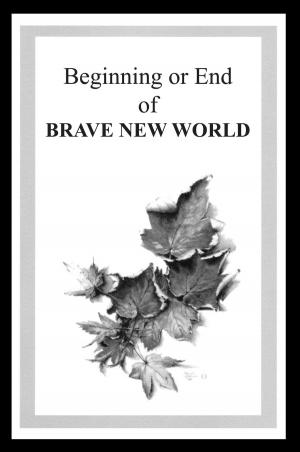Voices of Harmony and Dissent: How Peacebuilders are Transforming Their Worlds
Nonfiction, Reference & Language, Law, Alternative Dispute Resolution, Social & Cultural Studies, Social Science| Author: | Richard McCutcheon, Jarem Sawatsky, Valerie Smith | ISBN: | 9780920718964 |
| Publisher: | Canadian School of Peacebuilding | Publication: | May 31, 2015 |
| Imprint: | Smashwords Edition | Language: | English |
| Author: | Richard McCutcheon, Jarem Sawatsky, Valerie Smith |
| ISBN: | 9780920718964 |
| Publisher: | Canadian School of Peacebuilding |
| Publication: | May 31, 2015 |
| Imprint: | Smashwords Edition |
| Language: | English |
Imagine inviting wise elders of peace from different traditions around the world to a sharing circle focused on inspiring and sustaining peacebuilders. What if these elders were asked to share first-hand stories about their experiences of working for peace over a lifetime? What if they were asked to reflect on what they have found profoundly moving in their work, and what they have learned over the years about how peace can be fostered? What if they were asked to speak from the heart about the wisdom they have gleaned as they have lived as peacebuilders in the midst of violence?
We have been turning that “what if” into reality over the past six years at the Canadian School of Peacebuilding, held annually at Canadian Mennonite University. This book offers this deep transformational learning to a wider audience
Each chapter has a different author (or two), all of whom are peacebuilders who taught at the Canadian School of Peacebuilding during the first five years of the school. Not all of these authors are “technically” elders but they certainly all are wise teachers with experience living peace in the midst of violence and seeking a deep transformation of the space around them. Each of them begins from their own experience and knowledge, and through stories, reflection and analysis, draws the reader into the work and wisdom of peacebuilding in its many forms.
This is a deep diversity between the chapters. The differences in topic, style, and perspective stand out at first. This is not surprising, given that the authors come from such diverse backgrounds, cultures, and worldviews. They are men and women, Mennonite, Quaker, Indigenous, Catholic, and Buddhist. They are Thai, Canadian, Bosnian, and South African.
Common threads are also found in the little and big connections that hold these pieces together. George Lakey was a mentor to Karen Ridd, who tells a story about Stan McKay. Maxine Matilpi and Ouyporn Khuankaew both refer to Thich Nhat Hanh in explaining their own thinking and practice. Stu Clark and Sophia Murphy and Piet Meiring mention ways in which the work of their CSOP courses spilled over into peacebuilding actions to address current issues of injustice in Canadian society.
One of the central threads in this tapestry is a common centre in the way peacebuilding is approached. What emerges in these pages is a relationship approach to change, which is rooted in identity, compassion, and loving-kindness.
Another thread of the tapestry is a hope rooted in the awareness that the impossible is possible. This is not a hope rooted in escape or distraction but rather in the awareness that some people are living the future now. It is a hope not of abstract ideas but a hope rooted in first-hand glimpses. It is rooted in the real life stories of those who are confronted by violence of all kinds but choose to respond with a healing form of justice.
And so we offer you this collection of writings that transcends the usual divisions and structures and forced narratives that academia sometimes imposes on collections like this. Rather than grouping the chapters in a way that emphasizes one thread over another, we have chosen to list the pieces alphabetically by author to allow you to find your own connections. We invite you to travel your own journey through this book. Read the chapters in the order given or find your own, but as you dive into them look for common threads, be open to points of connection. Observe repeated patterns in the tapestry. And, yes, we encourage you to look for difference, even dissent, too.
In the end, it is our deep hope that the following chapters will inspire you, equip you, and sustain you in whatever kind of peace work you are doing, wherever in the world you are doing it. We hope that the stories of engaged peacebuilding included in this book empower you as you weave your own thread of peace into the tapestry of peace . This, we believe, is the beauty of harmony and dissent.
Imagine inviting wise elders of peace from different traditions around the world to a sharing circle focused on inspiring and sustaining peacebuilders. What if these elders were asked to share first-hand stories about their experiences of working for peace over a lifetime? What if they were asked to reflect on what they have found profoundly moving in their work, and what they have learned over the years about how peace can be fostered? What if they were asked to speak from the heart about the wisdom they have gleaned as they have lived as peacebuilders in the midst of violence?
We have been turning that “what if” into reality over the past six years at the Canadian School of Peacebuilding, held annually at Canadian Mennonite University. This book offers this deep transformational learning to a wider audience
Each chapter has a different author (or two), all of whom are peacebuilders who taught at the Canadian School of Peacebuilding during the first five years of the school. Not all of these authors are “technically” elders but they certainly all are wise teachers with experience living peace in the midst of violence and seeking a deep transformation of the space around them. Each of them begins from their own experience and knowledge, and through stories, reflection and analysis, draws the reader into the work and wisdom of peacebuilding in its many forms.
This is a deep diversity between the chapters. The differences in topic, style, and perspective stand out at first. This is not surprising, given that the authors come from such diverse backgrounds, cultures, and worldviews. They are men and women, Mennonite, Quaker, Indigenous, Catholic, and Buddhist. They are Thai, Canadian, Bosnian, and South African.
Common threads are also found in the little and big connections that hold these pieces together. George Lakey was a mentor to Karen Ridd, who tells a story about Stan McKay. Maxine Matilpi and Ouyporn Khuankaew both refer to Thich Nhat Hanh in explaining their own thinking and practice. Stu Clark and Sophia Murphy and Piet Meiring mention ways in which the work of their CSOP courses spilled over into peacebuilding actions to address current issues of injustice in Canadian society.
One of the central threads in this tapestry is a common centre in the way peacebuilding is approached. What emerges in these pages is a relationship approach to change, which is rooted in identity, compassion, and loving-kindness.
Another thread of the tapestry is a hope rooted in the awareness that the impossible is possible. This is not a hope rooted in escape or distraction but rather in the awareness that some people are living the future now. It is a hope not of abstract ideas but a hope rooted in first-hand glimpses. It is rooted in the real life stories of those who are confronted by violence of all kinds but choose to respond with a healing form of justice.
And so we offer you this collection of writings that transcends the usual divisions and structures and forced narratives that academia sometimes imposes on collections like this. Rather than grouping the chapters in a way that emphasizes one thread over another, we have chosen to list the pieces alphabetically by author to allow you to find your own connections. We invite you to travel your own journey through this book. Read the chapters in the order given or find your own, but as you dive into them look for common threads, be open to points of connection. Observe repeated patterns in the tapestry. And, yes, we encourage you to look for difference, even dissent, too.
In the end, it is our deep hope that the following chapters will inspire you, equip you, and sustain you in whatever kind of peace work you are doing, wherever in the world you are doing it. We hope that the stories of engaged peacebuilding included in this book empower you as you weave your own thread of peace into the tapestry of peace . This, we believe, is the beauty of harmony and dissent.















